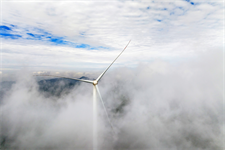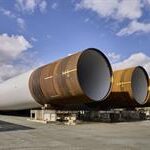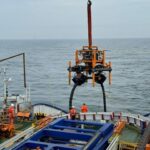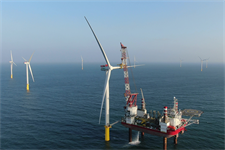New aerodynamics model could improve wind turbine design and operation
Energy Disrupter
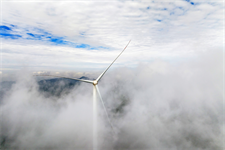
The paper, published in the Nature Communications journal this week (22 August), shows how engineers from the US university developed a comprehensive mathematical model for aerodynamics on wind turbine rotors.
It was sponsored by European wind turbine manufacturer Siemens Gamesa and the US National Science Foundation.
The study pointed out numerous gaps in scientific understanding of aerodynamics on rotors, which it said led to myriad corrections in the academic literature to adapt 19th and 20th century learning to 21st century situations including modern wind farms.
The authors, Jaime Liew, Kirby Heck and Michael Howland from MIT’s civil and environmental engineering faculty, claim that their work overhauls this situation by going back to first principals and creating a “unified momentum model” that eliminates the need for complex corrections on older mathematical models.
Consequently it can “efficiently predict power production, thrust force and wake dynamics of rotors under arbitrary inflow angles and thrust coefficients without empirical corrections”, the paper states.
It does so by “accounting for both misalignment between the rotor and inflow and the pressure deficit in the rotor wake,” the authors say.
The study could have a significant impact for wind turbine manufacturers and operators by improving the efficiency of individual turbines and, by implication, of entire wind farms. It could also improve the way rotors are designed, the authors claim.
Wind farm operators need to constantly adjust wind turbines to optimise generation in highly variable conditions.
The team’s mathematical model can be applied immediately to this problem, according to Howland.
“This is what we’re so excited about – that it has immediate and direct potential for impact across the value chain of wind power,” he told MIT’s news outlet.
Howland and the team developed the model by first using theoretical mathematics that deviated from long-established understandings of aerodynamics, and then validating their new model with computer simulations.
The study is the latest in a series of recent academic papers that use mathematics and computer modelling to help improve forecasting and predictability in the wind industry.
For example, data scientists from the University of British Columbia’s (UBC) Okanagan campus in Kelowna, Canada, and Delft University of Technology (TU Delft) in the Netherlands released an open-source framework for simulating wind flows on typical wind farms last year they claim can improve wind farm output forecasting.
More recently, engineers in Switzerland have used algorithms to design adjustable blades for vertical axis wind turbines.

